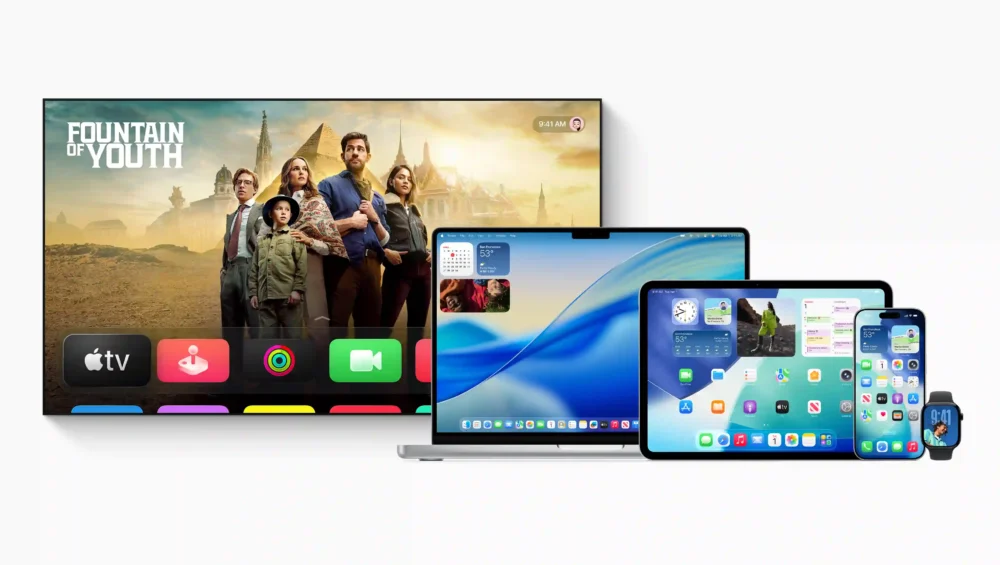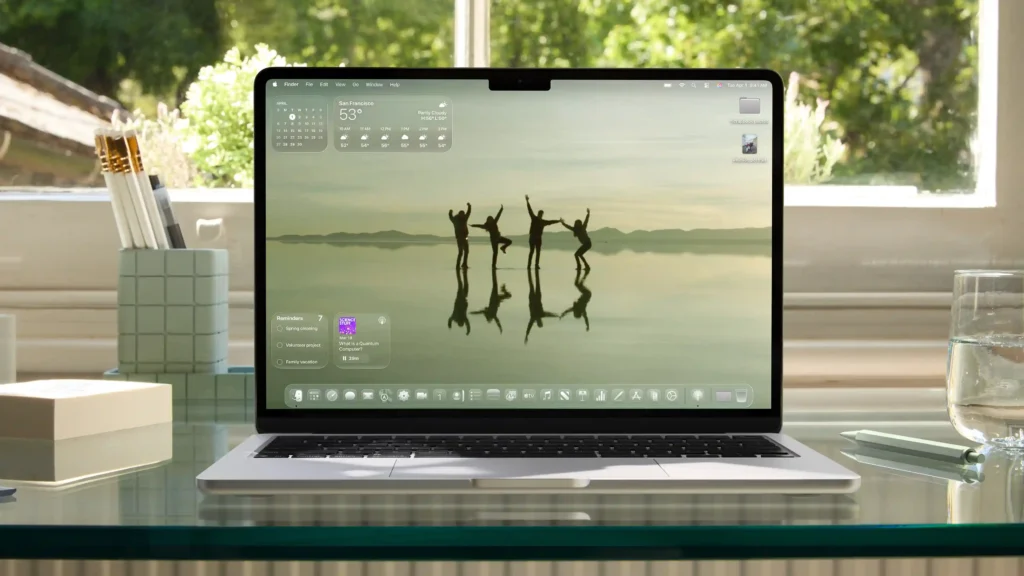What’s Really Behind Apple’s Liquid Glass Update? A Clue to Their Next Big Product
At Apple’s latest developer conference, WWDC 25, Apple announced the unification of its brand-new iOS, along with a distinct new design dubbed Liquid Glass.
A new fluid, translucent interface that behaves like glass, bending and refracting light and elements around it like real-life glass.
When you take a close look at Apple’s Liquid Glass update and their current product lineup, it raises the question: why now, and why doesn’t it seem to fit with their existing products?
In this article, we’ll take a look at:
- The Liquid Glass mystery
- Answer the questions of why Apple is doing this now
- And why it doesn’t seem to fit their current lineup.
First, let’s discuss the trippy-looking Liquid Glass a bit more.
What Is Apple Liquid Glass?
Apple’s new Liquid Glass update is coming to all their products, from iPhones to MacBooks and even the Vision Pro.
Liquid glass effects show up all over the UI, from widgets to icons; many menus have been redesigned to better suit this new look. Liquid Glass dynamically adapts to content being displayed to allow users to remain connected to their content while keeping everything visible.
If you’ve been tracking the recent developer betas for Apple’s lineup, you’ve probably noticed something strange: Apple has been experimenting heavily with the contrast and readability, and even rolled back some transparency to make things more legible. But it just doesn’t feel like it belongs on any of the current devices. It seems out of place, like it’s ahead of its time.
But here’s the thing: this wouldn’t be the first time Apple quietly laid software groundwork for future (unreleased) hardware products on current products.
Laying the Groundwork
In the past, Apple has laid the groundwork for future products using software in today’s devices. In fact, they do it all the time.
- Touch ID APIs were embedded in iOS before the first fingerprint sensor appeared.
- Trackpad cursor support came to iPadOS before the Magic Keyboard was even announced.
- And most recently, spatial video support was added to iPhone 15 Pro models months before the Vision Pro ever shipped.
Apple has a history of “soft-launching” tech by laying clues and groundwork in its current lineup, like pre-adoption groundwork. So what does this mean for Apple’s Liquid Glass update?
The Liquid Glass Conspiracy & Spatial Computers
In recent years, Apple has been moving towards a more spatial computing experience. Not just them, other tech giants like Google, Samsung, Meta, Snap, Microsoft, and even Amazon are all investing heavily in what they see as the next frontier of computing.
But one problem with spatial computing devices is how they (think mixed reality headsets) overlay information in front of your eyes, effectively obstructing parts of your vision. And that’s where Apple’s Liquid Glass comes in, a good balance between digital overlays and the real world.
Liquid Glass dynamically adapts to what’s behind it in devices, that could be applied to spatial computers like the Vision Pro, making the UI adapt to your real life surroundings even as you move around and your environment changes.
So with this new UI on Apple Vision Pro and future Apple spatial computers, the problem of UI elements blocking what’s behind them will be mostly solved.
As mentioned earlier in this article, the tech world is moving towards spatial computing. Even though Apple’s already competing in that segment with their Vision Pro, rumors suggest there’s an even more exciting spatial computing product we’ve yet to see.
The Vision Pro 2 and Apple Glass
For years, it’s been rumored that Apple is working on a Meta Ray-Ban competitor, and earlier this year, a report from popular analyst Ming-Chi Kuo confirmed the planned mass production of a product that fits the rumored description of Apple Glasses. And Vision Pro 2 rumors are already hinting that the device is already in the works at Apple.
Putting all this together, Apple’s design unification at the release of Liquid Glass seems like a well-timed event to get users used to fluid, depth-aware interfaces in order to ease the adoption of future spatial computers. In other words, Apple is helping users get used to depth-aware interfaces to familiarize them with upcoming spatial computers, easing the user experience.
Final Thoughts
Liquid Glass isn’t just a fancy new redesign solely for the sake of a better user experience and fresh new look. This visual shift is an early signal of what to expect from Apple, an indicator of how Apple is starting to prioritize spatial computing. Apple’s Liquid Glass update isn’t just for now; it’s for what’s next.
Frequently Asked Questions on Apple’s Liquid Glass
What does Apple’s Liquid Glass do?
The Apple Liquid Glass update brings a new fluid, translucent design that mimics the way real glass bends and refracts light. As part of the broader Apple UI changes in 2025, it makes interface elements feel more dynamic and immersive.
Which iPhones have Liquid Glass?
iPhones eligible for the iOS 26 update will have Liquid Glass. That is the iPhone 11 and newer will have Liquid Glass. Check out the full list of Apple devices compatible with iOS 26.








